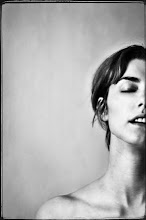
This book is fantastic! It is laid out in textbook format, but don't let that intimidate you. It is well worth reading!
The first note to make about this book is that its focus is more directed towards photographers working with film. This book covers topics such as: paper and negative developers, photographic toners, specialty films and cameras, and how to mix and store chemistry. It also has an excellent opening chapter about what photography is and pushing the boundaries of art making.
The author, Robert Hirsch, also wrote a lengthy chapter about historic processes. This chapter was the main reason I bought the book. I picked up quite a few helpful tips for coating paper and what substrates work with different processes. I felt the information was adequate enough to at least begin experimenting with these processes, though I sometimes wished he'd gone into more depth. I learned about a new process called gumoil that I am very excited to try and already have a project in mind for it.
Overall I found this book to be very informative. Hirsch is very thorough in the information given. He lists recipes for: making toners, chemistry for historic processes, as well as film and paper developers. He explains in detail what the different chemicals do and why they are needed. He tells what the different visual results will be depending on what type of developer is used. (For example, with film he specifies how each developer will effect the grain size, contrast, etc). He also gives a lot of resources, such as: introducing a wide range of working artists, websites to buy supplies and chemicals, websites for more information about the topic, and a long list of resource guides at the end of each chapter, including other books.
One of the things I liked the best is that this book is filled with beautiful photographs from a wide range of artists. Often he would use the photographs as examples of what he was talking about by using artists who used a certian processes or developer or technique. Also the images would have quotes from the artists that not only explained their technique but also talked about what their art means or why they made it. I love that! It was kind of like little artists statements with each photograph.
The one thing I found most disappointing was the description of how to make digital negatives. I felt like he really skimmed over the concept. He did not give much detail about it. He mentioned the need to change the curves in Photoshop and what to change it to depends on the process you are working with. But then he gave no information about what the curve settings need to be. All he did was reference an artist's website, Dan Burkholder, who has written a book about making digital negatives. So, I guess if you don't already have the curves and information you need, you might want to look into buying the other book, too. Maybe he felt like it was too much information to try and add to his book. But I did take note that for someone who doesn't have experience with making digital negatives, they will probably get lost when making one if they are only going off the information he provided.
My final critique of the overall quality, clarity, information, and inspiration of this book is that it is excellently executed. I felt very inspired by it. I wrote a long lists of ideas to try that I gained from reading this book. I was really influenced by the artists' works and writings. I felt like I gained a lot of insight into the art making process. I learned things about photography I did not know, especially new darkroom techniques. This book is a resource I plan on referring to often. I recommend it to any serious artists working with film, darkroom techniques, or historic processes. To me, it is a must have!












